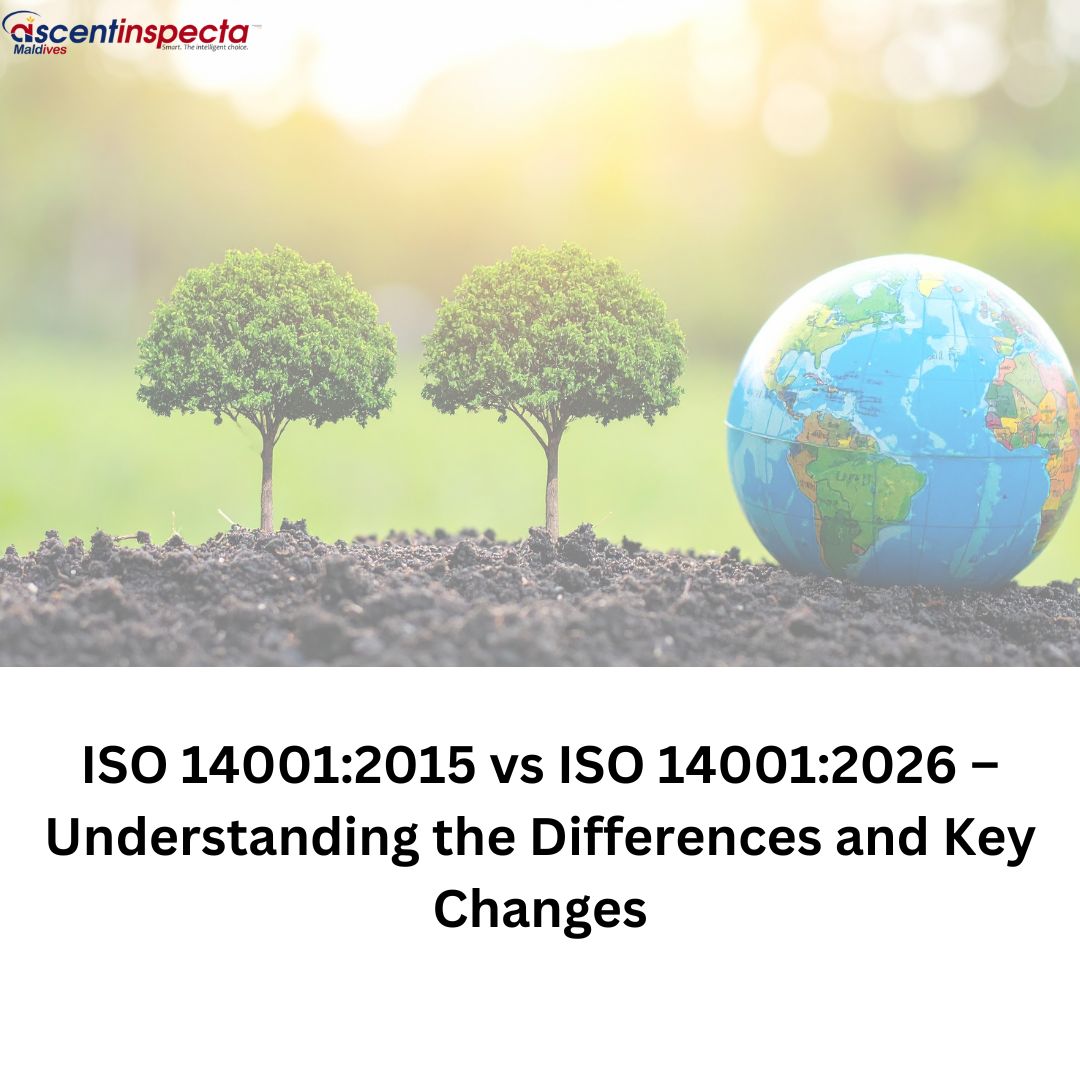Blog Details

Published: Sep 22, 2025
ISO 14001:2015 vs ISO 14001:2026 – Understanding the Differences and Key Changes
Introduction
Environmental sustainability has become a pressing concern for organizations across industries. As climate change, resource depletion, and global ecological challenges intensify, international standards play a crucial role in guiding businesses toward greener practices. ISO 14001, the world’s most recognized standard for Environmental Management Systems (EMS), has been helping organizations systematically manage their environmental responsibilities for decades.
The latest revision of this standard, ISO 14001:2026, is set to replace ISO 14001:2015, bringing updates that align with modern environmental challenges, sustainability goals, and global regulatory expectations. Understanding the difference between ISO 14001:2015 and ISO 14001:2026 is essential for businesses preparing to transition to the new version.
This blog explores the key differences, major updates, and the significance of ISO 14001:2026 for organizations aiming for sustainable growth.
A Quick Recap: ISO 14001:2015
ISO 14001:2015 focused on helping organizations establish, implement, maintain, and continually improve an Environmental Management System. It emphasized:
- → Leadership involvement in environmental management.
- → Risk-based thinking for identifying environmental threats and opportunities.
- → Lifecycle perspective, considering environmental impacts from production to disposal.
- → Integration with business strategy, aligning environmental goals with organizational objectives.
- → Compliance obligations, ensuring organizations meet national and international environmental regulations.
This version provided a structured approach for companies to reduce waste, optimize resource use, and adopt sustainable practices. However, with rapid global environmental shifts and new sustainability expectations, an update was inevitable.
Why the Update to ISO 14001:2026?
The revision to ISO 14001:2026 is driven by:
- → Climate Change Concerns: New scientific findings and international agreements, such as the Paris Agreement, call for stronger corporate environmental accountability.
- → Sustainable Development Goals (SDGs): The United Nations’ SDGs have influenced global policies, urging organizations to take a proactive role in sustainability.
- → Technological Advancements: Smart technologies, data-driven monitoring, and digital sustainability reporting demand a modernized EMS framework.
- → Stakeholder Expectations: Investors, customers, and regulators now demand transparency, traceability, and measurable environmental performance.
- → Circular Economy Trends: Moving away from a “take-make-dispose” model toward reuse, recycling, and responsible production.
ISO 14001:2026 addresses these evolving challenges, ensuring organizations remain compliant, competitive, and environmentally responsible.
Key Differences Between ISO 14001:2015 and ISO 14001:2026
- → Expanded Focus on Climate Change: ISO 14001:2026 now directly emphasizes climate change mitigation and adaptation.
- → Stronger Sustainability Alignment: Integrates UN SDGs, ESG reporting, and holistic environmental planning.
- → Lifecycle Assessment Reinforced: Deeper analysis of supply chains, raw materials, and end-of-life disposal.
- → Digitalization and Data Transparency: Encourages the use of real-time monitoring tools and public sustainability disclosures.
- → Circular Economy Principles: Promotes waste reduction, reuse, and closed-loop production systems.
- → Enhanced Stakeholder Engagement: Requires transparent reporting to investors, customers, and regulatory bodies.
- → Risk and Opportunity Management: Expanded to include climate resilience and biodiversity risks.
- → Leadership & Governance: Higher accountability from top management for environmental strategy and performance.
Key Changes Introduced in ISO 14001:2026
- → Climate Action Integration: Emphasis on emissions tracking, reduction targets, and climate risk analysis.
- → Strengthened Circular Economy Requirements: Focus on reuse, recycling, and waste minimization.
- → Greater Transparency and Reporting: Standardized sustainability reporting for ESG alignment.
- → Biodiversity and Ecosystem Protection: Stronger environmental protection across operations and supply chains.
- → Integration with ESG and SDGs: Links environmental, social, and governance goals into one strategic framework.
- → Digital Transformation of EMS: Encourages use of IoT, AI, and big data for environmental monitoring.
- → Supply Chain Accountability: Extends EMS responsibility across suppliers and contractors.
- → Stronger Leadership Responsibility: Requires environmental performance to be financially integrated into business strategy.
Benefits of Transitioning to ISO 14001:2026
- → Stay compliant with evolving environmental regulations.
- → Enhance brand reputation with stakeholders demanding sustainability.
- → Reduce risks linked to climate change and resource shortages.
- → Boost operational efficiency through waste reduction and resource optimization.
- → Access global markets where sustainable certifications are increasingly mandatory.
- → Strengthen investor confidence with transparent ESG reporting.
Preparing for the Transition
Organizations currently certified to ISO 14001:2015 will be given a transition period (expected to be 3 years) to adopt ISO 14001:2026. To prepare:
- → Conduct a Gap Analysis: Identify where your current EMS falls short of new requirements.
- → Engage Leadership: Ensure top management integrates environmental goals into corporate strategies.
- → Train Employees: Build awareness and skills around climate action, circular economy, and digital tools.
- → Strengthen Data Systems: Implement reliable monitoring and reporting mechanisms.
- → Collaborate with Experts: Work with accredited certification bodies to ensure smooth compliance.
Conclusion
The transition from ISO 14001:2015 to ISO 14001:2026 marks a significant shift in how organizations approach environmental management. While ISO 14001:2015 laid the foundation for structured environmental practices, ISO 14001:2026 reflects the urgency of today’s sustainability challenges—climate change, biodiversity loss, and resource scarcity.
This updated standard goes beyond compliance, encouraging organizations to adopt sustainable, transparent, and future-proof practices. Businesses that adopt ISO 14001:2026 early will not only ensure compliance but also gain a competitive edge by demonstrating a genuine commitment to environmental responsibility.
Comments Section
We’d love to hear your thoughts,Feel free to leave a comment below:
